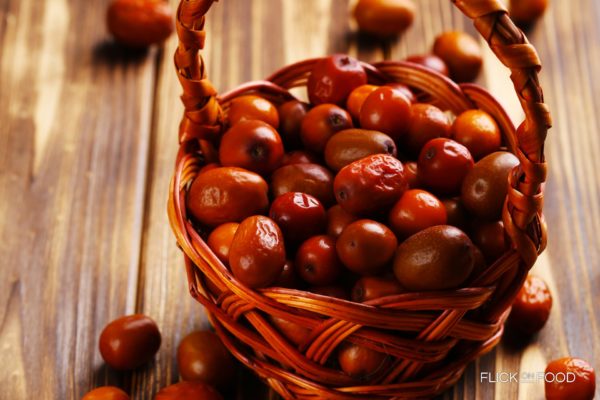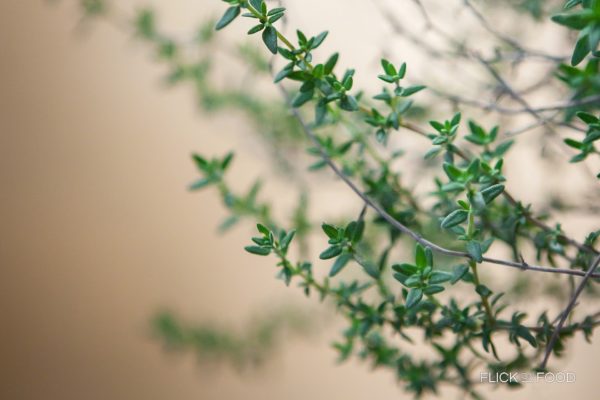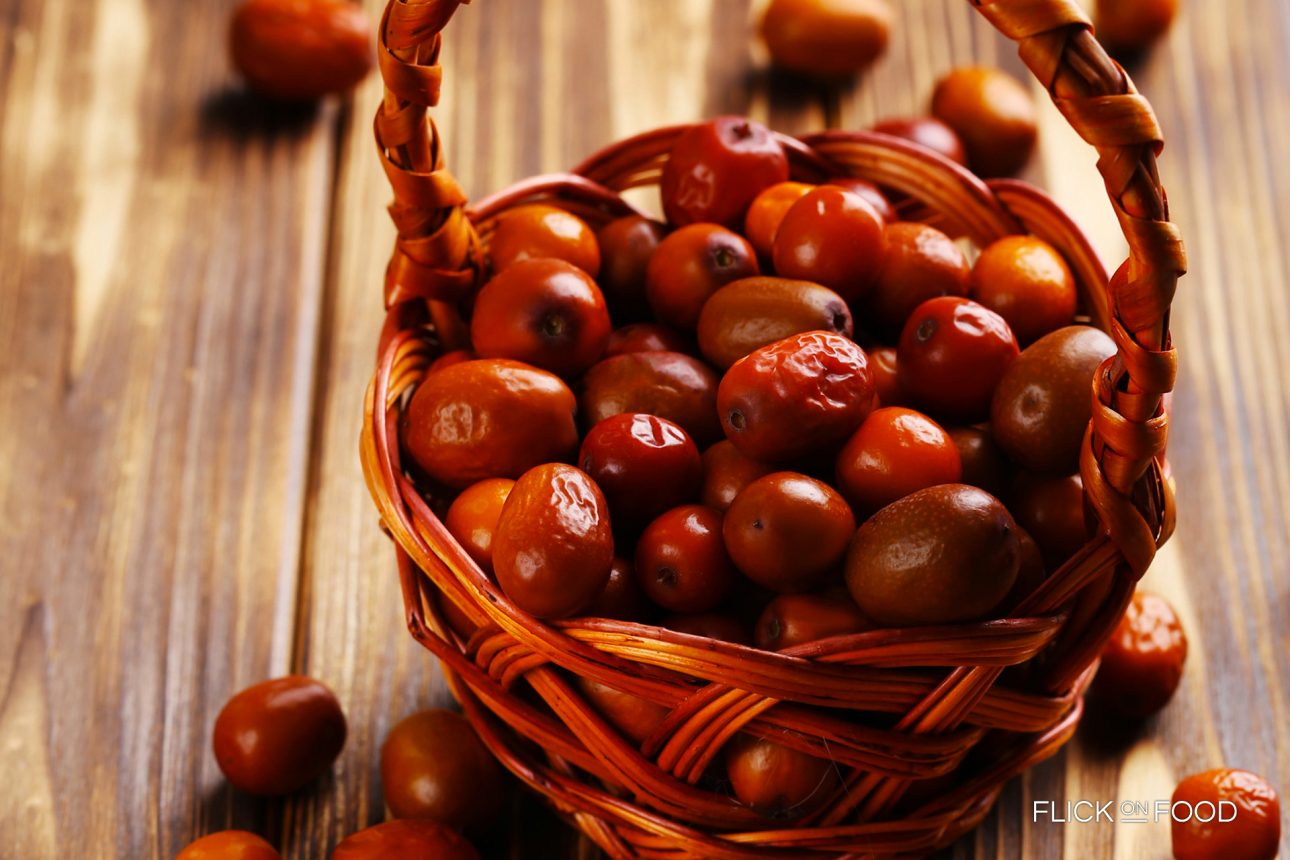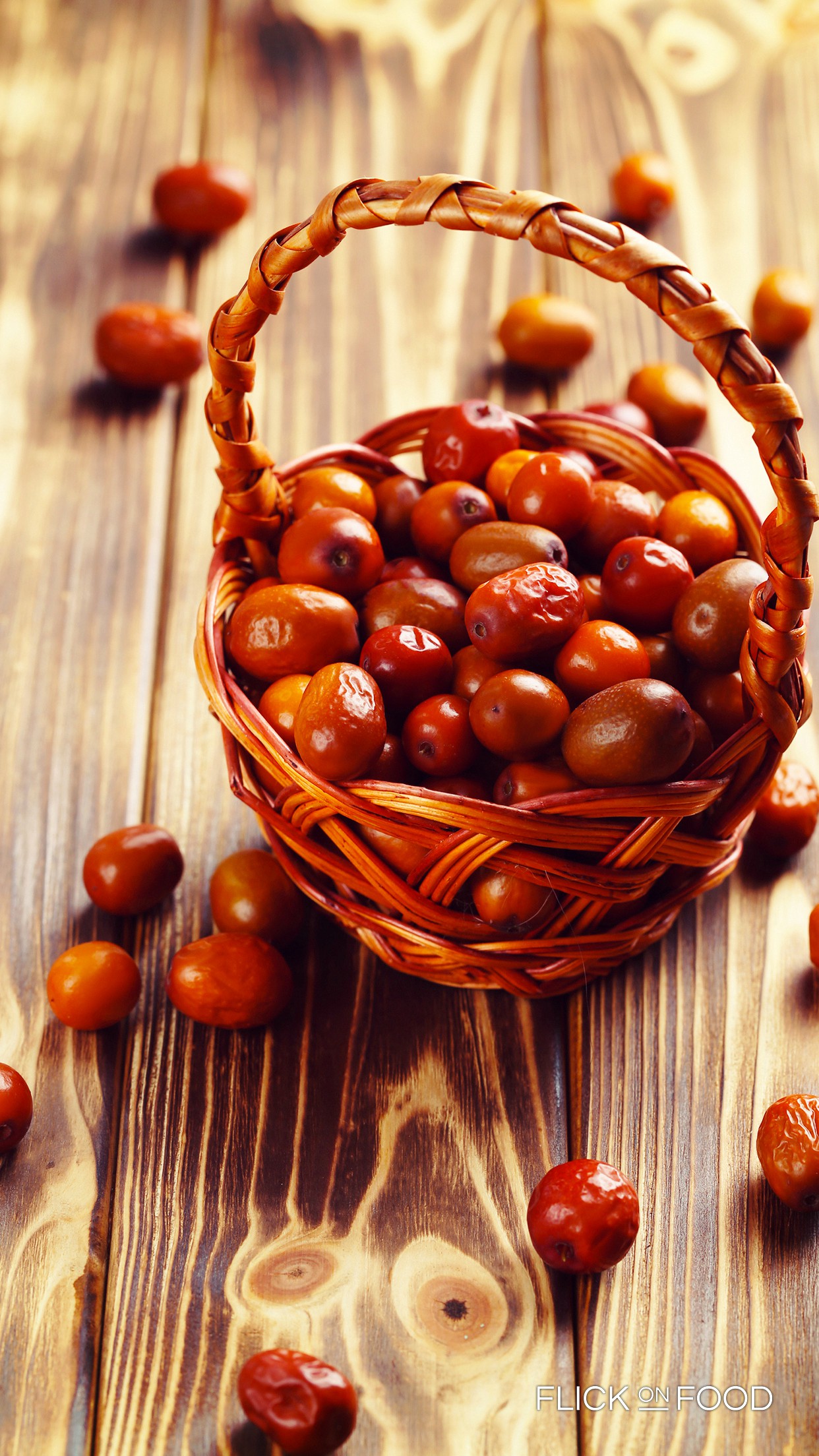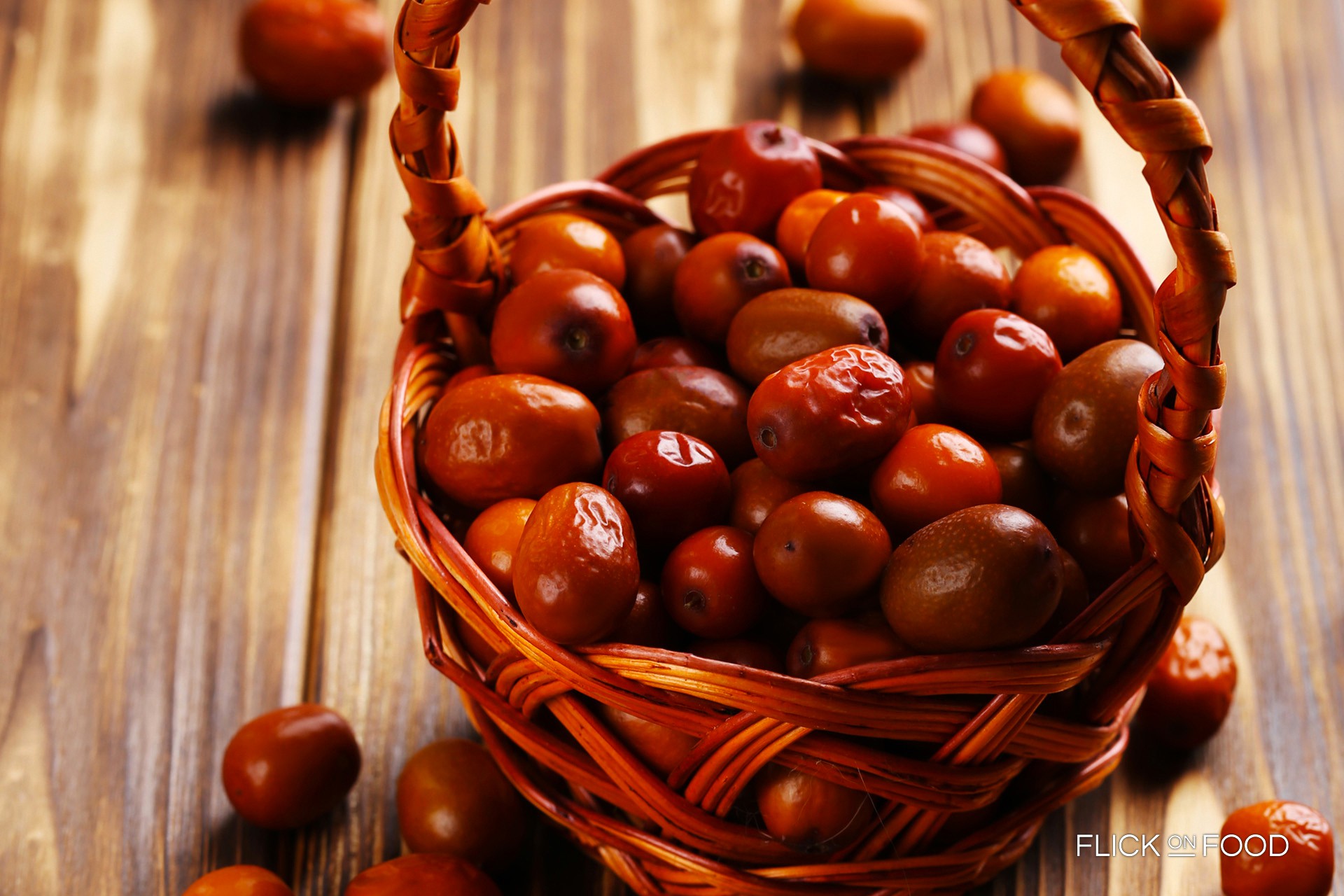
For teas and infusions, but if you eat them fresh you’ll get all their properties.
Origin
Jujube is the fruit of the namesake three also known as Chinese dates, and it belongs to the Ramnacee family. It originally came from Siria and after it was introduced in China and India, where it has been cultivated for more than 4000 years. It spread in the Mediterranean where Egyptians and Phoenicians used to use it to make liquors. After the Renaissance, in a villa on the Lake of Garda, the Gonzaga family made this fruit their ensign, preparing for the guests an elisir that became famous in Italy (the famous brodo di giuggiole). This fruit loves temperate climates and it is cultivated in the lower Garda area, in Padua and Vicenza, where they are picked from September till October.
Cookit
Jujube is as big as an olive and the taste varies: if the peel is green it is very crunchy and it tastes like an apple. If eaten with a brownish peel, the taste is sweet with a soft consistency, like a date. Very used to make liquors, jams and syrups and to make savory dishes like meat. But sweets and the main purpose of this ingredient:cookies, pastries and cakes. Perfect autumn breakfast? Sweet bread with jujube!
Did you know
There are more than 400 jujube varieties, mainly from China where it was anciently believed that jujube trees made people fall in love…that’s why the trees were kept under surveillance! In Italy the phrase “andare in brodo di giuggiole” (“turn to mush”) was created to indicate the joy that the taste of this fruit can give.



